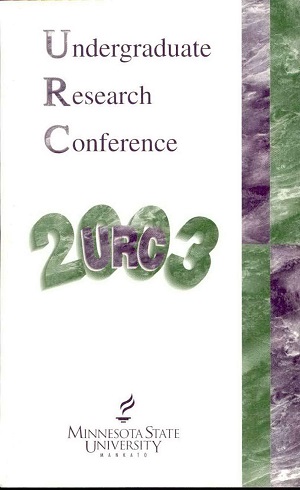Purification of Actin Capping Protein Alpha Subunit Specific Antibodies and Immunolocalization in Murine Tissues
Location
CSU
Student's Major
Biological Sciences
Student's College
Science, Engineering and Technology
Mentor's Name
Marilyn Hart
Mentor's Department
Biological Sciences
Mentor's College
Science, Engineering and Technology
Description
Actin is a protein that is vital to cell shape, cell motility, and muscle contraction. Actin is a polymer that possesses two very distinct ends: the pointed end and the barbed end. Capping protein (CP) binds the barbed end. Actin assembly is regulated by a variety of proteins including CP. CP is a heterodimer, composed of an alpha (a) and beta (p) subunit. In vertebrates, there are three isoforms of the a subunit (al, a2, and a3 and three beta isoforms (pi, P2 and P3). The a and p isoforms have conserved sequences across vertebrates, suggesting conserved specific functions. Previously, al and a2 isoform specific antibodies were purified from polyclonal antisera using a specialized matrix, an affinity column. We ensured that the antibodies were isoform specific using Western Blot analysis. The al antibody reacted specifically with the al protein, and the a2 antibody reacted specifically with the a2 protein. We are currently using the purified isoform specific antibodies to determine the localization of the a isoforms in murine tissues using immunoflorescence. Cryosections were prepared from heart, kidney, skeletal muscle, spleen, liver, and lung, probed with the antibodies, and tagged with a fluorescent marker.
Purification of Actin Capping Protein Alpha Subunit Specific Antibodies and Immunolocalization in Murine Tissues
CSU
Actin is a protein that is vital to cell shape, cell motility, and muscle contraction. Actin is a polymer that possesses two very distinct ends: the pointed end and the barbed end. Capping protein (CP) binds the barbed end. Actin assembly is regulated by a variety of proteins including CP. CP is a heterodimer, composed of an alpha (a) and beta (p) subunit. In vertebrates, there are three isoforms of the a subunit (al, a2, and a3 and three beta isoforms (pi, P2 and P3). The a and p isoforms have conserved sequences across vertebrates, suggesting conserved specific functions. Previously, al and a2 isoform specific antibodies were purified from polyclonal antisera using a specialized matrix, an affinity column. We ensured that the antibodies were isoform specific using Western Blot analysis. The al antibody reacted specifically with the al protein, and the a2 antibody reacted specifically with the a2 protein. We are currently using the purified isoform specific antibodies to determine the localization of the a isoforms in murine tissues using immunoflorescence. Cryosections were prepared from heart, kidney, skeletal muscle, spleen, liver, and lung, probed with the antibodies, and tagged with a fluorescent marker.



